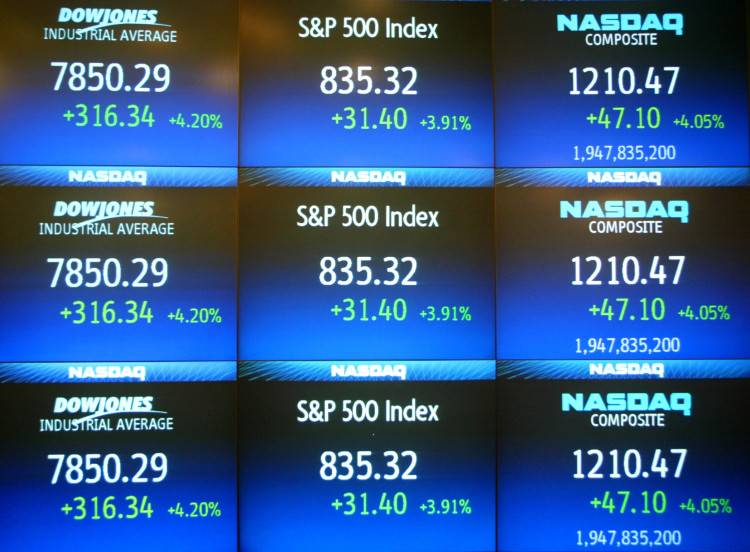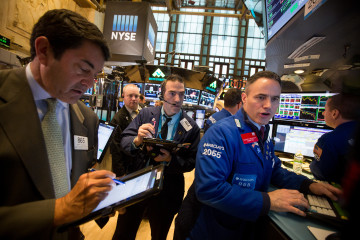It’s Revenge of Weak Balance Sheets in S&P 500 as Stocks Hover

published Aug 18th 2016, 3:30 pm, by Joseph Ciolli
(Bloomberg) —
Add companies with shoddier finances to the list of U.S. stocks that have led the advance since February — a potentially bullish sign for investors waiting for the S&P 500 Index to snap out of its paralysis.
Shares of firms with weaker balance sheets are up 24 percent since markets bottomed in Feb. 11, outpacing their sturdier brethren by 7 percentage points, according to data compiled by Goldman Sachs Group Inc. and Bloomberg. That’s the widest spread in two years for a period of that length. The S&P 500, which rallied 19 percent over the stretch, increased 0.2 percent to 2,187.02 as of 4 p.m. in New York on Thursday, closing at a session high.
While it sounds like bad news, gains in leveraged companies has generally been a sign of economic confidence. The weak balance sheet group rallied 50 percent in 2013, beating the 30 percent advance in the S&P 500 that was itself the best return since 1997. Value stocks are also outperforming growth shares over the last six months.
“You’ve seen a much more risk-on appetite since oil bottomed in February, which, to investors, has made it more OK for companies to be leveraged,” said Randy Warren, who manages more than $100 million at Exton, Pennsylvania-based Warren Financial Service & Associates Inc. “It indicates people are feeling comfortable with the pace of economic growth.”
The rebound in crude oil that helped catalyze the S&P 500’s recovery from a two-year low continued on Thursday, with the resource entering a bull market after a July swoon. Energy shares surged 1.8 percent to a nine-month high, leading gains in the equity benchmark. The Dow Jones Industrial Average added 0.1 percent to 18,597.70, while Nasdaq Composite Index climbed 0.2 percent. The CBOE Volatility Index fell 6.2 percent to 11.43, as the measure of market turbulence held near a two-year low.
“We’re just melting up right now,” said Warren. “There’s no reason to go down, so we’re hanging in there, moving slowly higher.”
The U.S. stock market’s climb has also been aided by data showing steady improvement in the world’s largest economy. Citigroup Inc.’s U.S. Economic Surprise Index last month hit its highest level since September 2014. The gauge, which measures the strength of data relative to analysts’ forecasts, has been above zero since early July, a feat it hadn’t managed since November.
The signs of improvement, most notably in labor-market data, have emboldened investors to favor industries with higher levels of leverage. Technology shares, which had the highest weighting in the Goldman basket of weak balance sheet companies as of June, have surged 15 percent since June 27, outpacing the S&P 500’s 9 percent advance. Among the leaders, NetApp Inc. jumped the most in six years Thursday after better-than-estimated quarterly results, pushing its gain since February past 50 percent.
The broader index’s seven-week advance since a two-day rout following the U.K. secession vote has delivered 10 fresh records after more than a year without one, though the rally has slowed in the last three weeks. Valuations remain at the highest levels of the seven-year bull market and recent data have painted a mixed picture on the economy’s strength.
At the same time, chances that the Federal Reserve will raise interest rates this year have fallen below 50 percent. March is now the first month with at least even odds of such a move.
Among shares moving Thursday, commodity producers rose with crude oil. Wal-Mart Stores Inc. advanced 1.9 percent after boosting its earnings forecast, and NetApp soared 17 percent on its results.
Caterpillar Inc. fell 1.2 percent after disappointing July sales data, and Cisco Systems Inc. slipped amid plans to cut about 7 percent of its workforce as the networking-equipment maker tries to recast itself as a provider of software-based systems and services.
Corrections Corp. of America and GEO Group Inc., two real estate investment trusts that operate prisons for the federal government and other clients, plunged more than 35 percent after the U.S. Justice Department announced plans to stop using private correctional facilities. About 5.9 billion shares traded hands today on U.S. exchanges, 14 percent below the three-month average.
Earnings season is winding down with fewer than 30 of the S&P 500’s companies yet to post results. Of those that have, 78 percent beat profit projections and 56 percent topped sales predictions. Results have mostly exceeded estimates, though analysts forecast index members will still report a 2.5 percent drop in net income, and see a 0.8 percent decline for the quarter ending in September.






No Comment